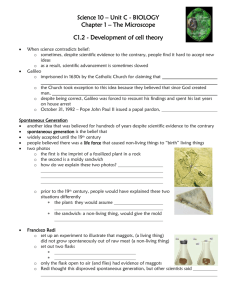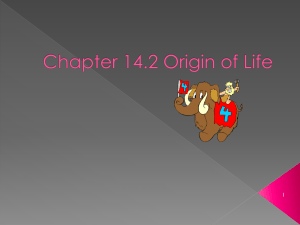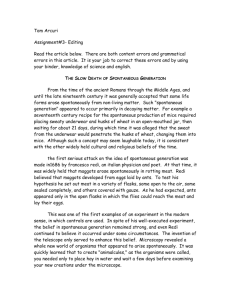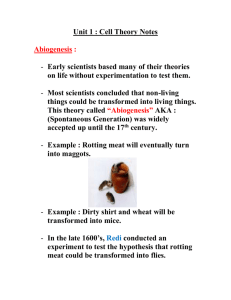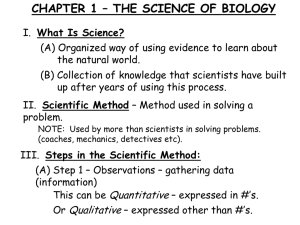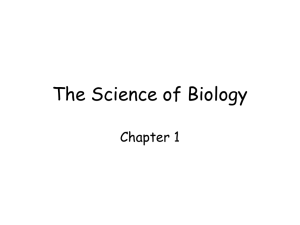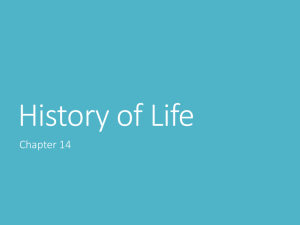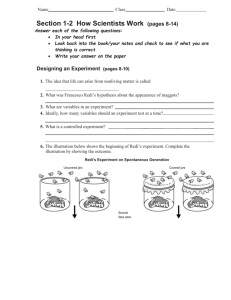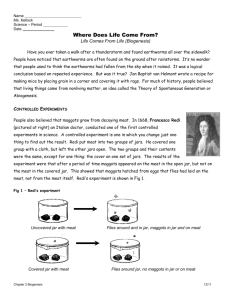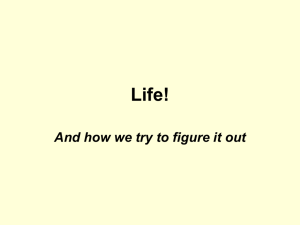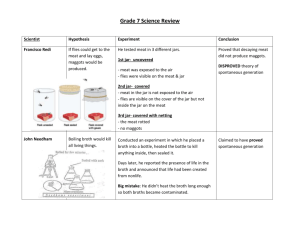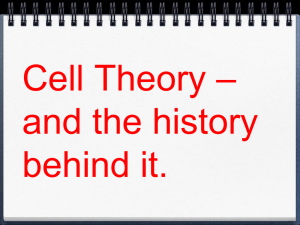cell theory - Menihek Home Page
advertisement
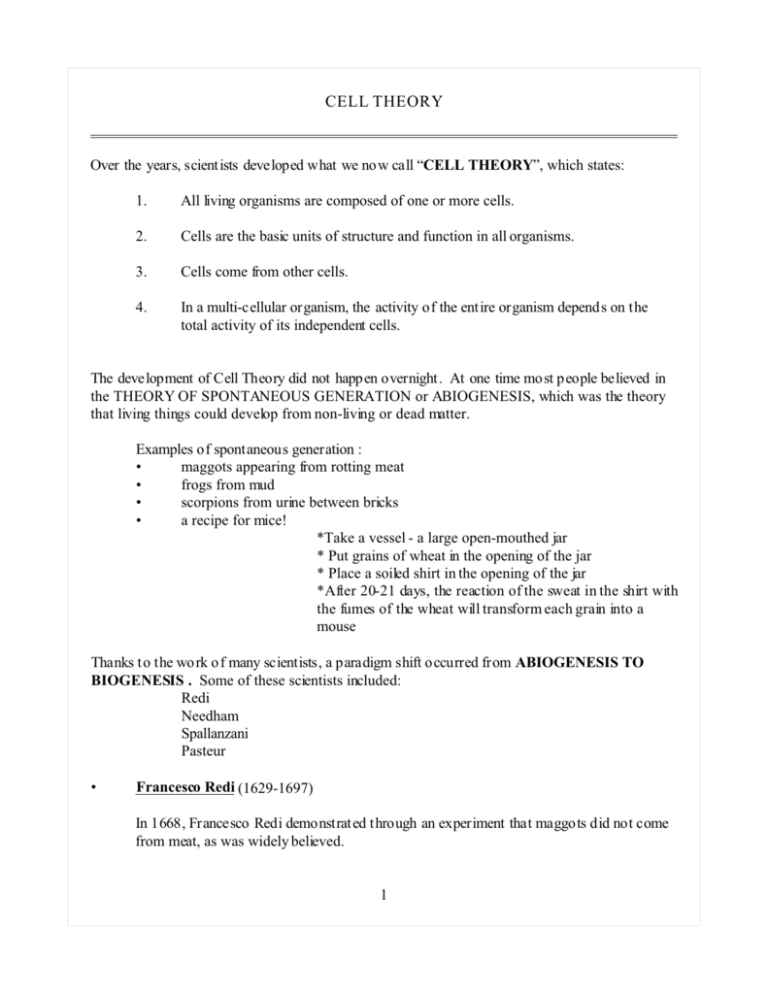
CELL THEORY Over the years, scientists developed what we now call “CELL THEORY”, which states: 1. All living organisms are composed of one or more cells. 2. Cells are the basic units of structure and function in all organisms. 3. Cells come from other cells. 4. In a multi-cellular organism, the activity of the entire organism depends on the total activity of its independent cells. The development of Cell Theory did not happen overnight. At one time most people believed in the THEORY OF SPONTANEOUS GENERATION or ABIOGENESIS, which was the theory that living things could develop from non-living or dead matter. Examples of spontaneous generation : • maggots appearing from rotting meat • frogs from mud • scorpions from urine between bricks • a recipe for mice! *Take a vessel - a large open-mouthed jar * Put grains of wheat in the opening of the jar * Place a soiled shirt in the opening of the jar *After 20-21 days, the reaction of the sweat in the shirt with the fumes of the wheat will transform each grain into a mouse Thanks to the work of many scientists, a paradigm shift occurred from ABIOGENESIS TO BIOGENESIS . Some of these scientists included: Redi Needham Spallanzani Pasteur • Francesco Redi (1629-1697) In 1668, Francesco Redi demonstrated through an experiment that maggots did not come from meat, as was widely believed. 1 In his experiment, he took four different jars with meat in them, two he covered and two he left uncovered. Only the jars with no covers produced maggots. Those jars were filled with flies and maggots. He concluded that the maggots came from the flies and not from the meat. • John Needham (1713-1781) In 1748, Needham believed that beef broth could produce microorganisms that would make meat broth go cloudy. He brought the broth to a boil for several minutes to sterilize it and then put it into two flasks, one sealed flask and one open flask. In several days, both flasks were cloudy with microorganisms. Needham’s experiment seemed to indicate that living microscopic organisms were produced spontaneously in broth that had been boiled. • Lorenzo Spallanzani (1729-1799) Spallanzani did not believe in spontaneous generation, and wanted to prove that Needham’s experiment was incorrect. He repeated Needham’s experiment, but he boiled the meat broth longer than Needham. The sealed flask did not become cloudy with microorganisms, but the open flask did. Spallanzani’s conclusion was that the microorganisms didn’t come from the boiled meat broth. • Louis Pasteur (1822-1895) Pasteur wanted to prove Needham wrong. Pasteur thought that microorganisms came from other microorganisms in the air and water. He boiled a yeast and sugar broth to kill all the microorganisms in a special flask with a bent neck. As air entered into the flask the microorganisms would build up in the bends of the neck and would not enter into the broth. This broth did not turn cloudy. When the flask was tipped so that the broth came into contact with the bend in the flask (where the microorganisms were trapped), that broth clouded with microorganisms. He concluded that living organisms do not arise from non-living matter. 2 In addition to the four famous experiments, other scientists and technological advancements contributed to the development of Cell Theory. Cell Theory could not have happened without the contributions of Hooke, Leeuwenhoek, Schleiden, Schwann, and Virchow. • Robert Hooke (1635-1703) Hooke was an English scientist who used a compound microscope to examine thin slices of cork. He named the empty compartments CELLS. • Mattias Schleiden (1804-1881) Schleiden concluded all plants were made up of cells. • Theodor Schwann (1810-1882) He proposed all animals are made up of cells, and went on to sum up his work and his colleagues’s work to say that cells are organisms and entire animals and plants are collectives of cells. • Rudolph Virchow (1821-1902) He stated that all cells arise form pre-existing cells Advancements in lenses and the invention of the microscope were both essential to study cells. 3
